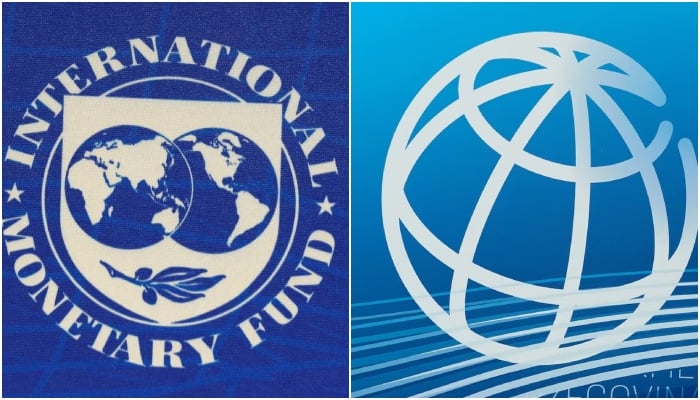IMF & World Bank Latest Reports — What They Reveal in 2025
Introduction
The IMF (International Monetary Fund) and World Bank are two major global institutions. Every year, they publish reports about the world economy. These reports help governments, businesses, and people understand where the global economy is headed. In 2025, their reports show both warning signs and paths forward.
Let’s break down the key findings in simple words, understand their meaning, and see what actions can follow.
What the Reports Forecast: Growth & Outlook
World Bank: Global Economic Prospects 2025
-
The World Bank now expects world growth in 2025 to slow to 2.3%, lower than many had predicted earlier. World Bank+1
-
This would make 2025 one of the weakest growth years outside a recession since 2008. World Bank+1
-
Developing nations (poorer or middle-income countries) are also seeing weaker growth: many will grow slower than earlier forecasts. World Bank+1
-
Conflict and instability in some fragile countries are pushing more people into extreme poverty. World Bank
So, the World Bank warns: the world is entering a phase of sluggish growth and many vulnerable nations could fall behind.
IMF: World Economic Outlook & Other Reports
-
In the World Economic Outlook (WEO) Update of July 2025, the IMF raised its global growth forecast slightly to 3.0% for 2025 and 3.1% for 2026. IMF+2McKinsey & Company+2
-
This is a modest upward revision compared to earlier estimates. IMF+2Reuters+2
-
The IMF also published the Global Financial Stability Report (GFSR) in April 2025. It warns that financial risks are rising due to high asset prices, debt burdens, and market vulnerabilities. IMF
-
Another report, External Sector Report 2025, shows that in 2024 many countries’ current account balances diverged significantly—meaning some countries exported or imported much more than before. IMF
-
In short, the IMF sees some optimism in growth forecasts, but also serious risks in debt, financial markets, and external accounts.
The Big Warnings & Risks They Emphasize
From these reports, several major challenges stand out. Here are what the IMF and World Bank are warning the world about:
1. Weak Growth & Low Momentum
-
Both institutions agree that 2025 will likely be a slow year for the global economy.
-
The World Bank’s downward correction from previous forecasts shows how fragile the outlook is.
-
Growth is not enough to push many countries forward, especially those trying to reduce poverty.
2. Debt Levels and Financial Stress
-
Many governments and companies have large debts. The rising cost of interest makes debt harder to manage.
-
The IMF’s financial stability report indicates vulnerabilities in markets and institutions.
-
Countries with weak finances may struggle to borrow more or invest in growth.
3. External Imbalances & Trade Gaps
-
The divergence in current accounts means some countries are running large trade surpluses, others big deficits. IMF
-
When this imbalance becomes large, it can cause pressure on exchange rates and cross-border financial stress.
4. Fragile & Conflict-Affected Zones
-
The World Bank points out that economies suffering conflict and instability are seeing setbacks. World Bank
-
In these zones, extreme poverty is rising, and recovery becomes harder.
5. Policy Uncertainty & Trade Tensions
-
Trade tensions, tariff changes, and sudden policy shifts are major risks named by both reports. IMF+2Al Jazeera+2
-
If global trade becomes more restricted, it can slow growth further.
6. Financial Market Overheating
-
According to the IMF, some asset prices may be inflated. IMF
-
Highly leveraged institutions and risky borrowing practices increase chances of shock.
What These Warnings Mean for Countries & People
These findings are not just numbers. They have real impact. Here’s what they imply:
-
Governments with less resilience may face budget crises, cuts in essential services, or inability to invest.
-
Poor or conflict-prone nations risk being left further behind, with higher poverty and less ability to grow.
-
Businesses may see higher costs, tighter credit, and slower demand.
-
Individuals and families may face slower job growth, inflation pressure, and limited social support.
What Can Be Done: Suggestions from the Reports + Ideas
The reports also suggest steps that countries and institutions can take to reduce risks and improve the path forward. Here are practical actions, in simple terms.
For Governments & Policymakers
-
Strengthen social safety nets: Support for the poorest and vulnerable should be prioritized.
-
Prudent debt management: Avoid borrowing excessively and manage existing debt carefully.
-
Enhance financial regulation: Ensure that banks and markets are safe and not too exposed to risks.
-
Promote trade and open markets: Keep borders and trade more stable so businesses can plan.
-
Invest in infrastructure & human capital: Education, health, clean energy — these boost long-term growth.
-
Focus on fragile and conflict zones: Special programs to rebuild, restore trust, and reduce poverty.
For Businesses & Investors
-
Stress-test your finances: Be ready for harder times (higher interest, lower demand).
-
Diversify exposure: Don’t rely on one market or supply source.
-
Invest in resilience: Green energy, sustainable practices, digital adoption.
-
Manage debt carefully: Use borrowing wisely and don’t overextend.
For Individuals / Ordinary People
-
Build a small emergency fund: Even a few months’ expenses can protect you.
-
Be careful with high-interest loans: Avoid dangerous debt when possible.
-
Keep improving your skills: Be ready to adapt if job markets shift.
-
Stay informed: Read trusted sources about your country’s economic policies and how they affect you.
A Short Summary (in 5 points)
-
The World Bank expects global growth in 2025 to be weak—about 2.3%. World Bank+1
-
The IMF predicts global growth at 3.0% for 2025 after upward revisions. IMF+2McKinsey & Company+2
-
Major risks include high debt, financial market vulnerabilities, trade tensions, and conflict zones.
-
Imbalances in trade and current accounts are expanding, which could shake global financial stability. IMF
-
Action is needed — from governments, companies, and individuals — to build resilience and protect growth.

